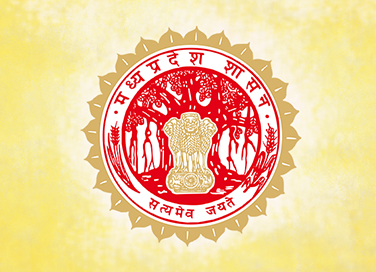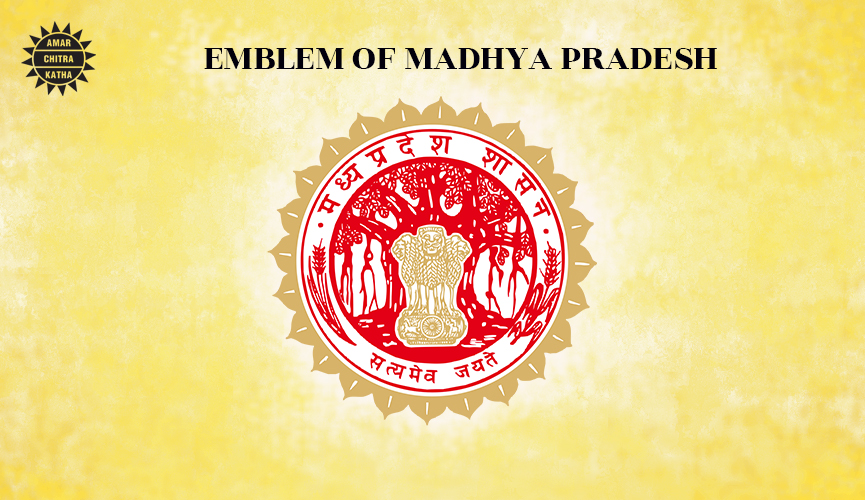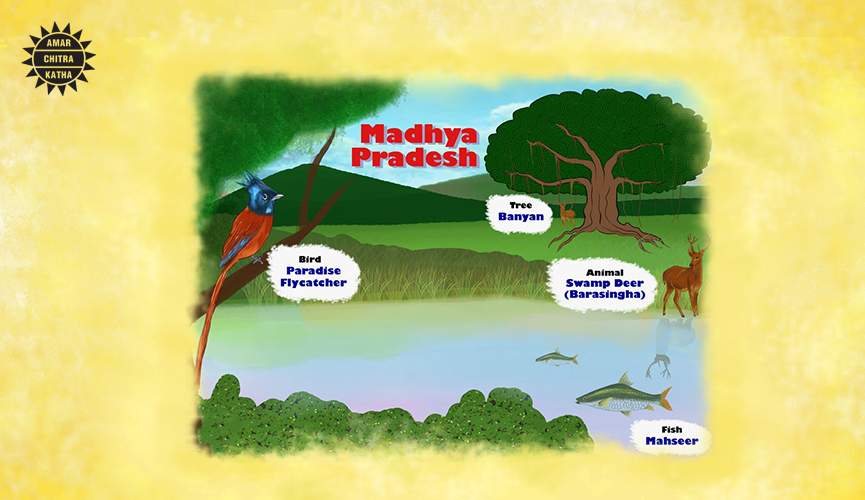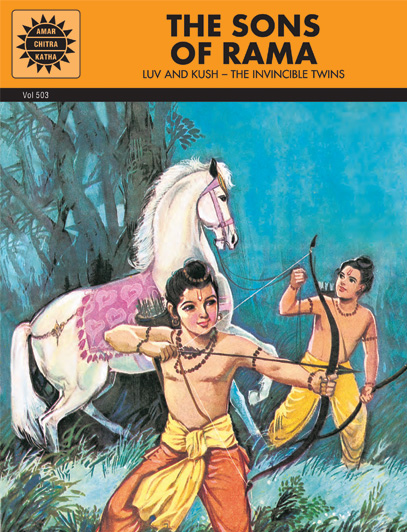The Story of Madhya Pradesh
- September 23, 2022


The Story of Madhya Pradesh
- September 23, 2022
By Srinidhi Murthy
Madhya Pradesh is the fifth-largest Indian state by population and the second-largest by area. The region has been a witness to the bravery of freedom fighters like Chandra Shekhar Azad, Tatya Tope, Rani Lakshmi Bai and Tantya Bhil, who fought against the British. Read on to know more about the history of Madhya Pradesh.
All of modern-day Madhya Pradesh was part of the Mauryan Empire, established by Chandragupta Maurya in 322 BCE. This mighty empire declined after the death of Chandragupta Maurya’s grandson, Ashoka. After that, various dynasties ruled parts of, or all of Madhya Pradesh, from the 2nd century to the end of the 10th century. The Satavahana dynasty of Northern Deccan and the Saka dynasty of the Western Satraps fought for control over Madhya Pradesh during the period between the 1st and 3rd centuries. The region also witnessed the rise of Rajput clans, namely Paramaras of Malwa and the Chandelas of Bundelkhand, between the 9th and 14th centuries. The Chandelas, who ruled between the 9th and 13th centuries, built the famous Khajuraho temples.
To receive more such stories in your Inbox & WhatsApp, Please share your Email and Mobile number.

In the 16th century, most of present-day Madhya Pradesh was under the reign of the Mughal emperor, Akbar (1556-1605). During Mughal rule, Gwalior became a centre for music. The region also witnessed the rise of Gwalior Gharana, one of the oldest schools of Hindustani classical music. Tansen, the famous vocalist at Akbar’s court, was also from Gwalior. After the death of Aurangazeb, the grandson of Akbar, in 1707, the Mughal empire began to weaken. Due to this, the Marathas began to expand their territories in the 18th Century. Bajirao I, the 7th Peshwa (Prime Minister) of the Maratha empire, invaded the Mughal territories of Malwa and Gujarat. The Battle of Bhopal was fought between the Maratha Empire and Mughal forces led by Nizam of Hyderabad, near Bhopal in 1737. The Marathas were victorious and as a result, a large part of Malwa was surrendered to them.
In the late 18th and early 19th centuries, the British began to expand their dominions beyond Madras, Bengal, and Bombay. Between 1775 and 1818, three Anglo – Maratha Wars were fought. The British victory over the Marathas in the Third Anglo-Maratha War (1817-1819), helped the British East India Company suppress the empire and gain control over most of India. Most of the large and princely states of the region, including Indore, Rewa, Bhopal and Gwalior, came under British rule. The British annexed the state of Nagpur, which included regions belonging to present-day southeastern Madhya Pradesh, eastern Maharashtra, and most of Chhattisgarh, in 1953. During British rule, the princely states of Northern Madhya Pradesh were governed by the Central India Agency, a political unit of British India, created in 1854.

The region has been the battleground for several freedom fighters who sacrificed their lives for our nation. Tantya Bhil, from Khandwa district, Madhya Pradesh, was an active freedom fighter and a member of the Bhil tribe. He fought against British rule for twelve years and looted the government treasuries to distribute wealth among the poor and needy. Unfortunately, Tantya was captured and was hanged on 19 October, 1889. Another freedom fighter, whose bravery was witnessed in this region was Rani Lakshmibai. Rani Lakshmibai of Jhansi was one of the central figures in the First War of Indian Independence. After losing Jhansi to the British, Lakshmibai captured the Gwalior fort in Madhya Pradesh, with the help of Tatya Tope. She died while fighting bravely against the British forces near Gwalior, on 18 June, 1958. After the death of Lakshmi Bai, Tatya Tope continued his fight as a guerrilla fighter in the jungles. Unfortunately, he was imprisoned and hanged on 18 April, 1859. Another noted freedom fighter during the War of 1857, was Rani Avantibai Lodhi. She is remembered for her valiant fight against the British army using guerilla warfare. In the early 20th century, Chandra Shekhar Azad played a prominent role in the freedom movement. Along with Bhagat Singh and other revolutionaries, Azad secretly reorganised the Hindustan Republican Association (HRA), renaming it the Hindustan Socialist Republican Association, in 1928. Azad was martyred at the age of 24, after he shot himself to avoid being captured alive by the British forces, on 27 February 1931.
After India became independent in 1947, the new states of Madhya Bharat, Bhopal and Vindhya Pradesh were formed out of the Central India Agency. According to the States Reorganisation Act of 1956, the Hindi-speaking states of Madhya Bharat, Vindhya Pradesh and Bhopal were merged to become Madhya Pradesh. The Marathi-speaking region, Vidarbha, which included Nagpur, was ceded to Bombay State. Bhopal then became the new capital of Madhya Pradesh. Ravishankar Shukla, a leader of the Indian National Congress and an active participant in the Indian freedom movement, was elected as the first Chief Minister of the state. As a part of the Madhya Pradesh Reorganisation Act, the southeastern portion of the state separated to form the new state of Chhattisgarh in November 2000. Currently, Madhya Pradesh is bordered by the states of Uttar Pradesh to the northeast, Maharashtra to the south, Chhattisgarh to the southeast, Rajasthan to the northwest, and Gujarat to the west.
Madhya Pradesh’s economy is the 10th largest in India. The state has produced many famous journalists, authors and scientists, as well as a Governor of the Reserve Bank of India (RBI) and a Nobel Laureate. Raghuram Govindarajan is an Indian economist born in Bhopal, who served as the Governor of RBI from 2013 to 2016. Kailash Satyarthi from Vidisha, is a social reformer and the co-recipient of the Nobel Peace Prize, with Malala Yousafzai, in 2014. The state ranks 23rd among Indian states on the Human Development Index (HDI). Madhya Pradesh is rich in minerals and has the largest reserves of copper and diamond in India and has many tourist destinations to visit. The Khajuraho Temples, a UNESCO World Heritage Site; Bandhavgarh and Kanha National Parks, Gwalior, Orchha, and the Triangle destinations of Malwa: Mandu, Ujjain, and Omkareshwar are some of the desired tourist places of Madhya Pradesh. The state has also won the Best Tourism State National award for three consecutive years, i.e. 2015, 2016 and 2017.
To receive more such stories in your Inbox & WhatsApp, Please share your Email and Mobile number.

Comic of The Month
The Sons of Rama
The story of Rama and Sita was first set down by the sage Valmiki in his epic poem 'Ramayana.' Rama was the eldest son of Dasharatha, the king of Ayodhya, who had three wives - Kaushalya, Kaikeyi and Sumitra. Rama was the son of Kaushalya, Bharata of Kaikeyi and Laxmana and Shatrughna of Sumitra. The four princes grew up to be brave and valiant. Rama won the hand of Sita, the daughter of King Janaka. Dasharatha wanted to crown Rama as the king but Kaikeyi objected. Using boons granted to her by Dasharatha earlier, she had Rama banished to the forest. Sita and Laxmana decided to follow Rama. While in the forest, a Rakshasi, Shoorpanakha, accosted Laxmana but had her nose cut off by him. In revenge, her brother Ravana, king of Lanka, carried Sita away. Rama and Laxmana set out to look for her and with the help of an army of monkeys, defeated Ravana. On returning Ayodhya after fourteen years of exile, Rama banished Sita because of the suspicions of his subjects. In the ashrama of sage Valmiki, she gave birth to her twin sons, Luv and Kush.